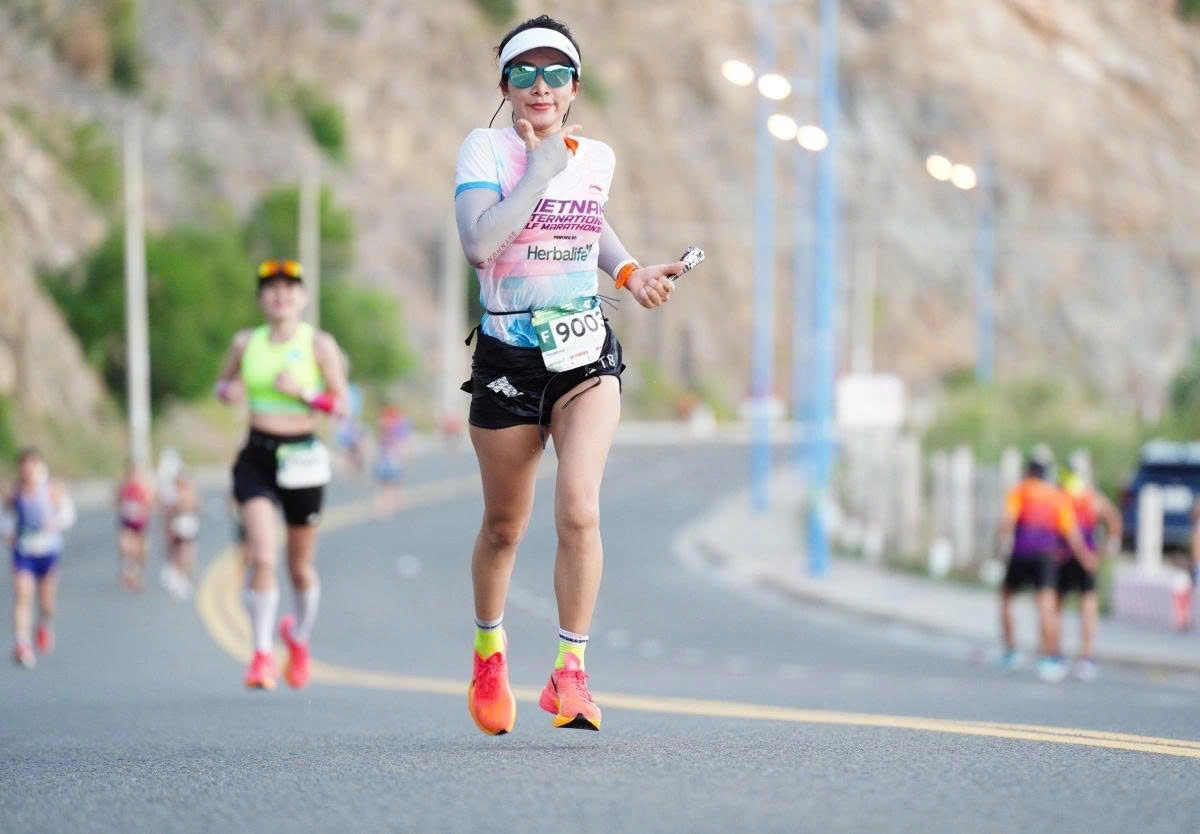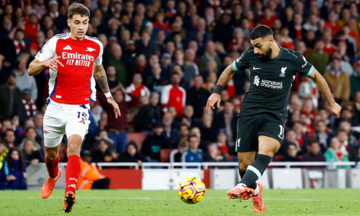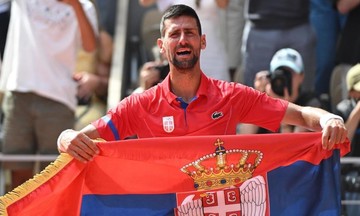Many road runners overlook downhill running technique because most marathons don't emphasize it. Uphill and downhill techniques are more common in trail running. However, for races with mixed terrain like the VnExpress Marathon Libera Nha Trang 2025, understanding and applying the correct downhill running technique is essential to avoid losing momentum or becoming exhausted in the final kilometers.
 |
A female runner conquers Deo Luong Son pass at VnExpress Marathon Nha Trang 2024. Photo: VnExpress Marathon |
A female runner conquers Deo Luong Son pass at VnExpress Marathon Nha Trang 2024. Photo: VnExpress Marathon
Downhill running isn't a "break"
According to a 2013 study published in the Journal of Sports Sciences, when running downhill, muscle groups like the quadriceps and Achilles tendon must work in an eccentric contraction to control movement. This mechanism creates an impact force that can be two to three times the body weight, putting pressure on the musculoskeletal system. Without proper preparation, runners are prone to muscle soreness, tendon fatigue, and reduced performance in the remainder of the race.
Incorrect relaxation technique
Many runners tend to relax completely when running downhill to take advantage of gravity. However, according to the American Council on Exercise, this can cause loss of control, increasing the risk of slipping or putting significant braking force on the knee joints if strides are too long. Maintaining a moderate pace, keeping a quick cadence, relaxing the upper body while controlling stride length is a more effective way to conserve energy and ensure safety.
Lack of pre-race training
Many runners neglect downhill simulation exercises before a race, leaving their musculoskeletal system inadequately prepared for eccentric force. As a result, body parts like knees, ankles, and Achilles tendons are susceptible to injury, potentially leading to delayed onset muscle soreness (DOMS). Trail Runner Magazine recommends practicing downhill simulations such as Bulgarian split squats, single-leg calf raises, or running down stairs to gradually acclimate the body before race day.
Running too fast to "make up time"
Many runners try to capitalize on downhill sections to increase their pace and compensate for time spent climbing. However, this can easily spike heart rate, quickly fatigue muscles, and leave runners without enough energy for the final 10 km.
At the VnExpress Marathon Libera Nha Trang, after the main downhill section, there are still some short slopes, bridge crossings, and a long flat stretch within the city. In the previous three seasons, many athletes who descended Deo Luong Son pass too quickly experienced a significant drop in speed from kilometer 34 onwards, upon returning to the city center. Without proper pace control, runners risk "burning out" after the downhill and struggling when returning to flat terrain.
Heel striking to slow down
Some runners tend to land on their heels to control speed when running downhill. However, heel striking transmits impact directly to the knee joints, increasing the risk of injury, especially on inclined terrain like Deo Luong Son pass.
 |
Runners landing midfoot while descending helps reduce pressure on the spine and knee joints. Photo: VnExpress Marathon |
Runners landing midfoot while descending helps reduce pressure on the spine and knee joints. Photo: VnExpress Marathon
A 2013 study published in the Journal of Biomechanics found that among runners who frequently heel strike (rearfoot strike), patellofemoral joint force was significantly higher compared to the midfoot strike group.
According to Gait & Posture (2025), runners using a midfoot strike experience 20-30% lower knee joint contact stress compared to rearfoot strikers, while also reducing joint torque.
The correct technique involves landing midfoot, with slightly bent knees and the center of gravity directly over the foot. This distributes force evenly across lower muscle groups and reduces pressure on the knee joints.
Lan Anh
The VnExpress Marathon Libera Nha Trang 2025 takes place on 24/8. This year, the organizers have adjusted the course, and runners will only face about 8 km of Deo Luong Son pass, instead of 10 km as in the previous season. The race is expected to attract 13,000 runners, concluding the three-race summer series within the VnExpress Marathon system, and tickets are currently on sale during the Late registration phase.












